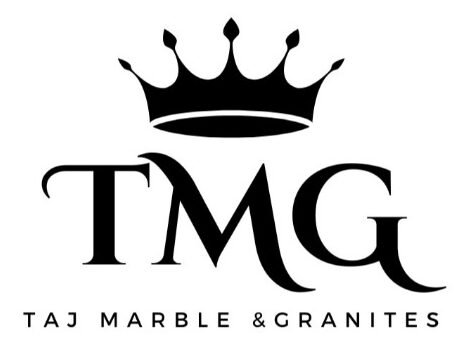Marble surfaces in a bathroom, while undeniably luxurious, require careful attention to maintain their beauty and prevent damage. Being a porous, calcium-carbonate-based stone, marble is susceptible to etching from acids, staining from various liquids, and scratching. Given the humid and high-traffic nature of bathrooms in India, protection is crucial.
Here’s a comprehensive guide on how to protect a bathroom with marble surfaces:
1. Sealing is Paramount:
- Initial Sealing: When your marble bathroom is installed, it must be professionally sealed. This is the first and most critical step. A good quality penetrating sealer will fill the microscopic pores of the marble, making it less absorbent and resistant to spills.
- Regular Re-sealing: Marble sealers are not permanent. Depending on the type of marble, the sealer used, and the traffic/use of the bathroom, you’ll need to re-seal your marble every 6-12 months, or as often as the “water test” indicates.
- Water Test: Pour a few drops of water (about 3 inches in diameter) on a clean, dry marble surface in several locations. Let it sit for 15-30 minutes. If the water is absorbed and leaves a dark mark or ring, it’s time to re-seal.
- Choosing a Sealer: Opt for high-quality, impregnating (penetrating) sealers specifically designed for natural stone and marble. Brands like Fila, Tenax, Guard Industry, and Surie Polex are well-regarded in India. Look for sealers that are “breathable” and “invisible” to maintain the marble’s natural look.
2. Immediate Cleanup is Non-Negotiable:
- Wipe Spills Immediately: Marble is highly susceptible to staining and etching from acidic substances. Any spill – be it water, soap, shampoo, conditioner, toothpaste, perfume, hair dye, cleaning products, or even hard water – should be wiped up immediately with a soft cloth. Do not let anything sit on the surface.
- Acidic Substances are the Enemy: NEVER use acidic cleaners like vinegar, lemon juice, ammonia, or harsh bathroom cleaners (often containing bleach or strong acids) on marble. They will etch the surface, creating dull spots that are difficult to repair.
3. Daily Cleaning & Maintenance:
- Gentle Daily Wipe-Down: After each use, especially on vanity tops and shower walls, wipe down the marble surfaces with a soft, dry cloth. This helps prevent hard water spots and soap scum buildup.
- Regular Cleaning with pH-Neutral Cleaners:
- For daily or weekly cleaning, use a pH-neutral cleaner specifically formulated for natural stone or marble. Many gentle dish soaps diluted in lukewarm water also work well.
- Use a soft cloth or sponge. Avoid abrasive scrubbers, harsh brushes, or scouring pads as they can scratch the surface.
- Always rinse thoroughly with clean water to remove any cleaning solution residue.
- Dry the surface completely with a clean, soft cloth to prevent water spots and streaks. Do not let it air dry.
- Avoid Standing Water: Don’t leave puddles of water on marble surfaces. Ensure adequate ventilation in the bathroom to reduce humidity, which can lead to moisture absorption and mould/mildew growth.
4. Protect from Scratches and Abrasions:
- Use Mats & Trays: Place vanity trays, soap dishes, and pump bottle holders under all toiletries to prevent direct contact with the marble surface. This protects against both chemical damage from products and hard water stains.
- Rugs and Mats: For marble flooring, use soft bath mats or rugs in high-traffic areas, especially near the shower, sink, and toilet, to trap dirt and absorb excess water.
- No Abrasive Particles: Regularly sweep or dry mop marble floors with a soft, microfiber dust mop to remove dirt, sand, and grit, which can act as abrasives and scratch the surface. Avoid vacuum cleaners with beater bars.
- Furniture Pads: If you have any furniture in the bathroom, place felt pads under its legs to prevent scratches.
5. Addressing Specific Issues:
- Hard Water Stains: In areas with hard water (common in many parts of India), mineral deposits can build up and create a cloudy film or visible stains.
- Prevention: The best defense is immediate drying after use. Consider a water softener for your home if hard water is a significant issue.
- Removal: For minor hard water spots, a paste of baking soda and water applied as a poultice can help. For stubborn stains, consult a professional. Avoid acidic cleaners!
- Stains:
- Organic Stains (coffee, tea, food): A poultice made with baking soda and hydrogen peroxide (for light marble) or baking soda and diluted ammonia (for dark marble, but use with caution) can often lift these.
- Oil-Based Stains (grease, oil): A poultice with baking soda and a few drops of dish soap can help draw out the oil.
- Rust Stains: These require specialized rust removers for natural stone (non-acidic).
- Always test poultices or stain removers on an inconspicuous area first.
- Etching (Dull Spots): If acidic substances have etched your marble, the surface has been dulled or roughened. Minor etching can sometimes be improved with a marble polishing compound. Significant etching requires professional re-polishing.
- Scratch Removal: Minor surface scratches can sometimes be buffed out with a marble polishing powder. Deeper scratches require professional repair and re-polishing.
6. Professional Maintenance:
- Periodic Polishing: Over time, even with the best care, marble can lose some of its shine. Professional marble polishing services can restore the lustre and address minor imperfections.
- Deep Cleaning & Sealing: Consider engaging professional stone care specialists periodically (e.g., every 1-3 years depending on usage) for deep cleaning and thorough re-sealing. They have access to specialized equipment and products that ensure optimal protection and restoration.




admin
The look of marble in your space will capture both its elegance and lasting beauty.
Alex
Committed to offering a broad range of unique and exclusive natural stones, facilitating the ideal choice of material.
admin
Thank You so much Alex
Peter Fernandes
Marble, Granite and stone is nature’s masterpiece from our Marble Stone Studio.
admin
Thank You Peter